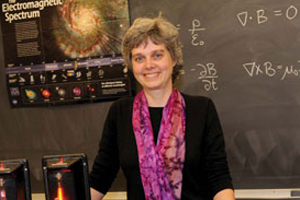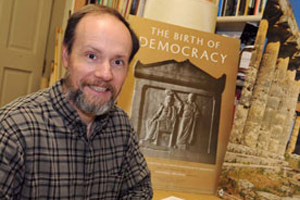What you should know: Physics

 Physicists study the universe at its largest scales.
Physicists study the universe at its largest scales.
Using space-based telescopes, astrophysicists have observed galaxies at distances of 13 billion light years. These and other observations have led astrophysicists to realize that the universe must contain a kind of matter (dark matter) that holds galaxies together and a kind of energy (dark energy) that is causing galaxies to move away from each other at an ever faster rate.
 Physicists study the universe at its smallest scales.
Physicists study the universe at its smallest scales.
By slamming together protons or other subatomic particles that have been accelerated in miles-long underground tunnels to nearly the speed of light, particle physicists have detected the smallest building blocks of matter, and in the process they found that they can create hundreds of other tiny but more massive particles that exist for only the briefest moments.
 Mathematics is fundamental to the nature of the physical universe.
Mathematics is fundamental to the nature of the physical universe.
Ever since Galileo measured the amount of time it takes for an object to fall in Earth’s gravity and Isaac Newton discovered that an object’s acceleration equals the net force acting on it divided by its mass, usually written as F=ma, physicists have been uncovering precise mathematical relationships which describe the way matter and energy interact. Successful theories include Maxwell’s mathematical description of electrodynamics, explaining the origin and behavior of light, and Einstein’s Theory of General Relativity, which provides a more fundamental description of gravity than Newton’s universal law of gravitation.
 Experiments provide the proof of the pudding.
Experiments provide the proof of the pudding.
Theories only become well accepted when experimental results agree with theoretical predictions. For example, tests of Einstein’s Theory of General Relativity in 1919 and 1922 gave early indications that the theory correctly predicted the bending of light by a massive object (in this case the sun), but physicists have continued to test the theory with ever greater precision. String theory (a quantum mechanical theory of gravity), on the other hand, has not led to testable predictions and therefore does not carry the same weight as General Relativity, even though both are referred to as “theories.”
 Physics is more practical than esoteric.
Physics is more practical than esoteric.
Despite physicists’ ongoing interest in the universe at its largest and smallest scales, most of their efforts are directed at understanding matter on a more human scale, and many research programs that started out exploring fundamental questions ended up producing technologies that are now considered essential. Electric power generation and radio signal transmission both arose as a result of Faraday’s discovery that oscillating magnetic fields create electric currents. The development of the transistor, the building block of all modern electronics, depended critically on the theory of quantum mechanics. Exploration of basic physical phenomena contributed to the development of many modern medical techniques, from X-ray imaging and magnetic resonance imaging (MRI) to positron emission tomography (PET). Even Einstein’s General Relativity is crucial to the proper functioning of a consumer electronic device — the GPS.


